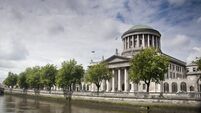Who are the key figures named and criticised by the Grenfell Tower Inquiry?

Robert Black and Eric Pickles were among those criticised in the report (PA)
Several individuals have faced criticism in the Grenfell Inquiry’s final report over their role in the disaster.
They include figures from both local and central government in the UK accused of repeated failures in their duties.











